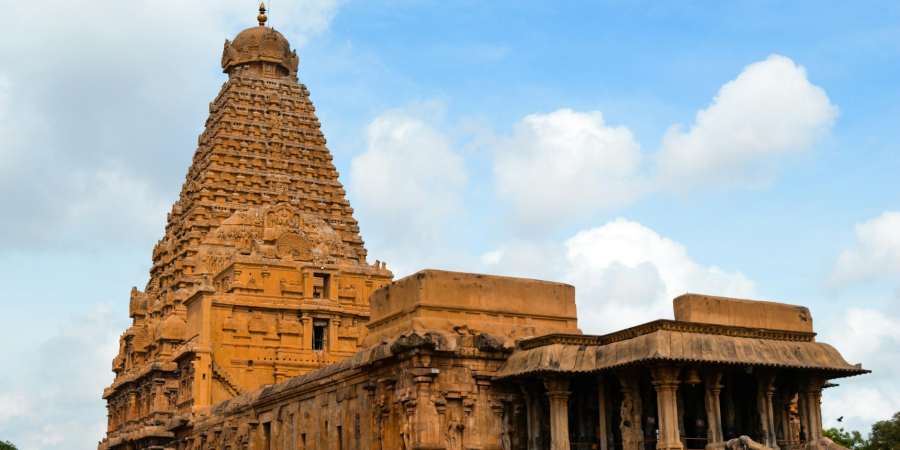

Large swathes of the Pandya kingdom, the Chera country, and northern Sri Lanka were included in Rajaraja's reign. Additionally, he increased his power over strategically important islands in the Indian Ocean, including sections of the Maldives, Thalidhunmadulu Atoll, and Lakshadweep. His victories extended beyond the southern region, as he also led victorious expeditions against the Western Gangas and the Western Chalukyas, establishing Chola dominion up to the Tungabhadra River. Regarding control of Vengi, Rajaraja encountered strong resistance from Jata Choda Bhima, the Telugu Chola monarch. This region's proximity to trade routes and resources made it of great strategic importance. The two kings' struggle for control over the area grew more intense, leading to major conflicts and changing allegiances.[6][7][8][9]The Rajaraja's
Rajaraja I's accomplishments in architecture and culture also made a lasting impression. In the Chola capital of Thanjavur, he oversaw the construction of the Rajarajeshwaram Temple, regarded as one of the most notable specimens of medieval South Indian architecture.[10] Important Tamil literary works by poets like Appar, Sambandar, and Sundarar were also collected and assembled under his rule into a unified compilation known as the Thirumurai. He was given the moniker "Thirumurai Kanda Cholar," which translates to "The One Who Found Thirumurai," as a result.[7][11] In 1000 CE, he started a land survey and evaluation effort that resulted in the division of Tamil nation into discrete pieces called valanadus.[12][13] After Rajaraja passed away in 1014 CE, his son Rajendra Chola took over.
The empire that Rajaraja inherited was concentrated only on the Thanjavur-Tiruchirappalli region, which was the hub of historic Chola territory, when he came to power.[1] That kingdom was little, though, and it was still mending from earlier raids by the Rashtrakutas. This was altered by Rajaraja, who turned the kingdom into a disciplined empire with a strong army and navy. During his reign, the northern kingdom of Vengi developed a strong alliance with the Cholas, and their power spread up the eastern coast to the northern region of Kalinga.
There are references to several regiments in the Thanjavur inscriptions. These regiments were divided into infantry, cavalry, and elephant forces. These units functioned autonomously and were free to build temples or make presents as they saw fit.
Architecture and the arts:
Once Rajaraja heard brief passages from Thevaram in his court, he set out on a mission to retrieve the hymns.[80] He asked Nambi Andar Nambi for assistance.[81] It is thought that Nambi discovered the presence of scripts—in the shape of half-eaten cadijam leaves by white ants—in a chamber inside the second precinct of the Thillai Nataraja Temple in Chidambaram thanks to divine assistance.[82][81] The mission was opposed by the brahmanas (Dikshitars) in the temple, but Rajaraja intervened by consecrating the saint-poets' pictures across Chidambaram.[82]As a result, Rajaraja earned the title Tirumurai Kanda Cholan, which means "one who saved the Tirumurai," in [83].
